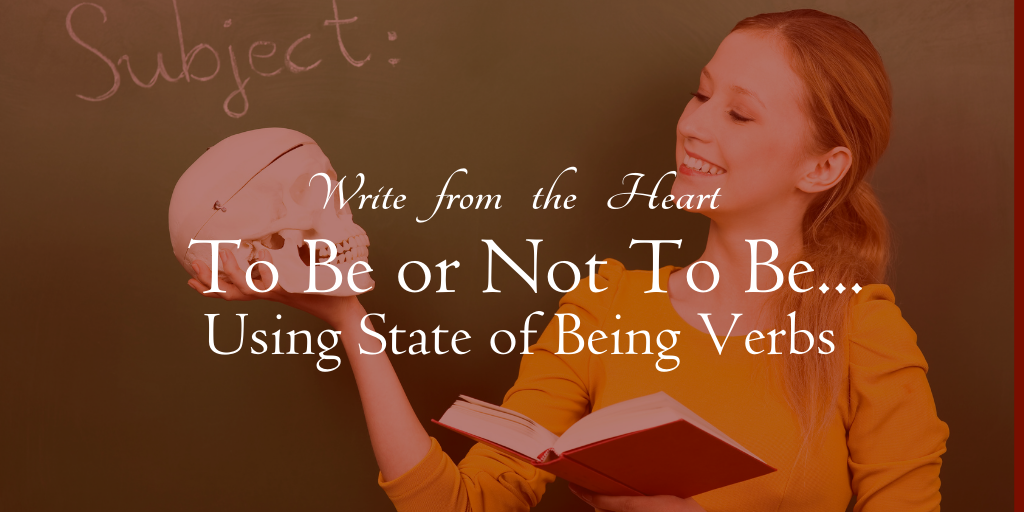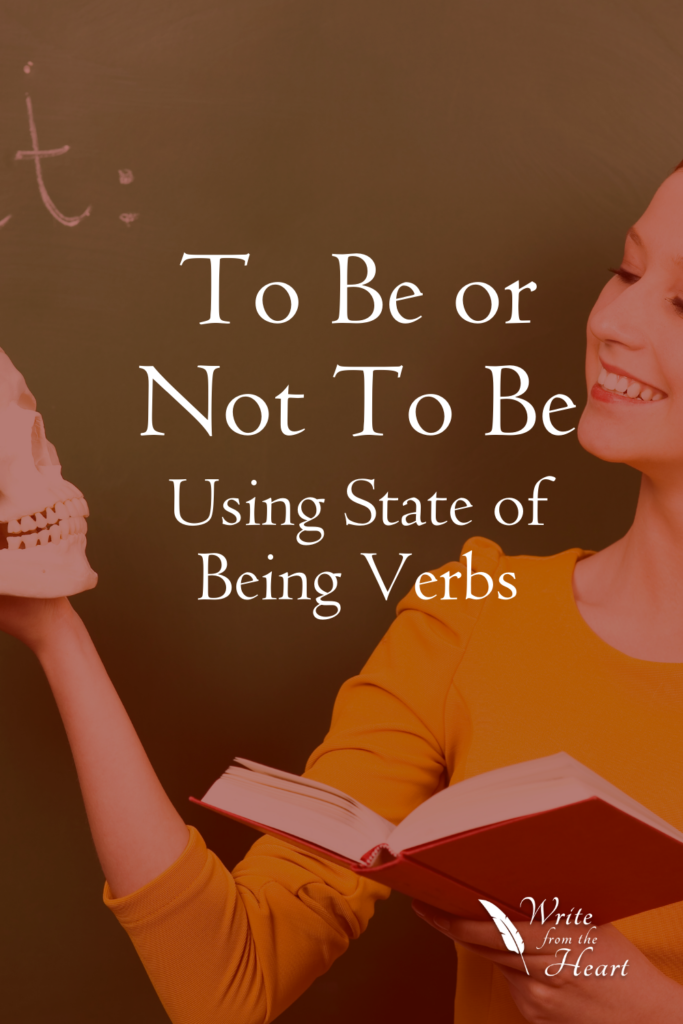
Using State of Being Verbs
What is the verb “to be”? This group of verbs are some of the most commonly used verbs in every piece of writing. We’ve already used two of them in this article! Using state-of-being verbs seems natural, right?
Most writers use them without thinking about them. And you’re reading them right now … probably wondering why they’re such a big deal anyway.
We’re talking about the verbs is, am, are, was, were, be, being and been. That’s what we call “to be” or “state of being” verbs.
These are handy little verbs that connect feelings, link subjects and main verbs and add descriptions. But they can be overused.
And over using state of being verbs may setback your writing, creating false impressions, vague generalizations and confusing subjects.
So here’s how to spot a to be verb, and what to do when you find them.
Identifying “To Be” Verbs
Remember, these verbs include the words is, am, are, was, were, be, being and been.
One of the first steps to improving your writing would be to go through a piece and highlight or circle these words every time you find them.
Do you notice how often they come up? Do you have large clusters of them? Maybe in several sentences in a row?
That might be a clue you’re overusing these verbs.
Are They Ever Necessary?
Sometimes, a “to be” verb is the only verb that fits. In this case, it’s most likely accomplishing one of these tasks:

- Conveying existence – I am your daughter.
- Explaining location – Dad is out of town.
- Giving emphasis or identity – Those are the right ones.
- Adding description – That coffee has been in the pantry too long.
- Timeframes – The party is starting!
While it’s a good idea to reduce the number of “to be” verbs in your writing, they’re more welcome in the narrative writing process.
Sometimes to be verbs make good place-marks when you’re on the hunt for a more vibrant, expressive verb. For example, this thought has plenty of “to be” verbs, but they don’t necessarily hurt the overall idea:
At that point, I just wasn’t sure about anything. I had been a bit of an adventurous soul, but this was beyond me; I was astounded. Could this path be the way for me?
Using state of being verbs can strengthen your writing, but never use to be verbs out of laziness.
Can they be replaced? Would the replacement be clearer? If the answer is “yes,” it’s time to check for a better verb.
Over Using State of Being Verbs
So you’ve recognized an abundance of these simple verbs in your own writing and you want to cut down on them. Try some of these steps to shift your aim to more accurate, active verbs:
- Identify the “to be” verbs. Try circling them!
I am not a fan of baseball. [Too vague]
Baseball bores me. [A more direct and expressive choice]
- Swap out nondescript nouns like this, those, and that, for a better fitting noun/verb combination.
These are the apples I want. They are red and look juicy. This bag is for my pie.
I chose the reddest, juiciest apples for my pie.
- Rearrange your sentence structure or swap the subject (and change the passive voice to an active one at the same time).
The roof was ripped off of the house by a strong wind.
A strong wind ripped the roof off of the house.
- Combine two or more choppy sentences into one cohesive thought.
I was stung by a bee yesterday. Today, my foot is swollen and red.
I blame the swelling and redness of my foot on yesterday’s bee sting.
Using to be verbs means your sentence is in the passive voice. You can get in the habit of using a more active vocabulary by taking note of how many times you use these verbs. And once you have the hang of identifying to be verbs, decide on whether or not they add to or take away from your writing. Then you can make the necessary corrections.
Sometimes a state of being verb is needed link between sentence parts. And that cannot be replaced. They are a necessary function, after all! There’s nothing wrong with using to be verbs, when necessary.
But reducing your use of to be verbs will make you a better writer.


